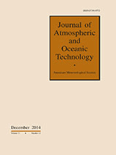
JOURNAL OF ATMOSPHERIC AND OCEANIC TECHNOLOGY
Scope & Guideline
Empowering Research for a Resilient Planet
Introduction
Aims and Scopes
- Atmospheric Measurement Technologies:
Research on innovative technologies for atmospheric observation, including radar systems, satellite sensors, and unmanned aerial systems (UAS). This area emphasizes the development and validation of instruments that enhance data accuracy and retrieval methods. - Oceanographic Measurement Techniques:
Development and validation of technologies for measuring oceanographic parameters such as temperature, salinity, currents, and wave dynamics. This includes the use of buoys, autonomous underwater vehicles, and satellite altimetry. - Data Assimilation and Modeling:
Studies focused on integrating observational data into numerical models to improve weather forecasting and oceanographic predictions. This scope involves the use of various assimilation techniques and the evaluation of their effectiveness. - Environmental Monitoring and Climate Studies:
Research addressing the impacts of atmospheric and oceanic conditions on climate change, weather patterns, and environmental phenomena. This includes the use of observational data to study phenomena like hurricanes, atmospheric rivers, and ocean currents. - Machine Learning and Data Analysis Techniques:
Application of advanced computational techniques, including machine learning and statistical methods, to analyze large datasets from atmospheric and oceanic observations. This includes improving forecasting models and data retrieval algorithms.
Trending and Emerging
- Remote Sensing Innovations:
A significant increase in research related to remote sensing technologies, including advanced satellite sensors and ground-based remote sensing systems, reflects the growing importance of these methods in environmental monitoring. - Artificial Intelligence and Machine Learning Applications:
Emerging themes in the application of AI and machine learning for data analysis, forecasting, and observational data retrieval are trending, indicating a shift towards integrating computational methods into atmospheric and oceanic research. - Integration of Autonomous Systems:
The rise of autonomous systems, including drones and autonomous underwater vehicles, for data collection in both atmospheric and oceanic studies is a notable trend, enhancing the efficiency and scope of environmental monitoring. - Interdisciplinary Approaches to Climate Research:
There is an increasing trend in interdisciplinary research that combines atmospheric science, oceanography, and climate studies, aiming to address complex environmental challenges. - High-Resolution Modeling Techniques:
An emerging focus on high-resolution modeling techniques for capturing fine-scale atmospheric and oceanic phenomena indicates a growing recognition of the importance of detailed modeling in understanding complex systems.
Declining or Waning
- Traditional In Situ Measurements:
There is a noticeable decline in papers focusing solely on traditional in situ measurement techniques, such as manual weather station observations, as newer technologies and remote sensing methods become more prevalent in the field. - Basic Instrument Calibration Techniques:
Research dedicated solely to basic calibration methods for older instrumentation has decreased, likely due to the emergence of more sophisticated calibration approaches and automated systems. - Single-Platform Studies:
Papers focusing on measurements taken from single platforms (e.g., a lone buoy or a single satellite) have waned as the field shifts toward integrated multi-platform approaches that provide more comprehensive data. - General Atmospheric Observational Techniques:
Research on general observational techniques that do not incorporate advanced technologies or methodologies has seen a decline, as the journal's focus has shifted toward innovative and high-tech solutions.
Similar Journals

Geoscientific Instrumentation Methods and Data Systems
Advancing Earth Sciences through Innovative Instrumentation and Data SystemsGeoscientific Instrumentation Methods and Data Systems, published by COPERNICUS GESELLSCHAFT MBH, is a distinguished open-access journal dedicated to the dissemination of innovative methodologies, advanced instrumentation, and comprehensive data systems in the earth sciences. With an ISSN of 2193-0856 and an E-ISSN of 2193-0864, this journal has been paving the way for insightful research since its inception in 2012. Based in Germany, it serves a global audience interested in atmospheric science, geology, and oceanography, reflected in its impressive Scopus rankings and recent categorizations as Q2 and Q3 in these vital fields. The journal’s mission is to foster interdisciplinary collaboration and facilitate knowledge exchange, providing a platform for researchers and professionals to share significant advancements and challenge the frontiers of geoscientific instrumentation and methods. As an open-access journal, it ensures that pivotal research findings are accessible to a wider audience, promoting inclusivity and rapid dissemination of knowledge critical to addressing global challenges in earth and planetary sciences.

JOURNAL OF HYDROMETEOROLOGY
Pioneering Research in Hydrometeorological ScienceJOURNAL OF HYDROMETEOROLOGY, published by the American Meteorological Society, is a leading scholarly journal that serves as a vital resource within the field of atmospheric science. With its ISSN 1525-755X and E-ISSN 1525-7541, this journal provides a platform for the dissemination of high-impact research, currently holding a prestigious Q1 ranking in Atmospheric Science as per the 2023 Category Quartiles. It enjoys an excellent reputation, ranked #30 out of 148 in the Scopus listings, placing it in the top 80th percentile within Earth and Planetary Sciences. Publishing rigorous and innovative studies from 2000 to 2024 and beyond, the journal addresses critical topics including weather forecasting, climate dynamics, and hydrological processes, making it essential reading for researchers, professionals, and students alike. Though not an open-access journal, it continues to enrich the academic community with quality contributions dedicated to advancing our understanding of hydrometeorological phenomena.
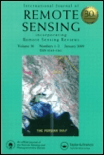
INTERNATIONAL JOURNAL OF REMOTE SENSING
Connecting Science and Technology to Monitor Our EnvironmentInternational Journal of Remote Sensing, published by Taylor & Francis Ltd, stands at the forefront of Earth and Planetary Sciences, providing a critical platform for disseminating pioneering research since its inception in 1980. With an impressive ranking of #25 out of 195 in general Earth and Planetary Sciences and a notable 87th percentile on Scopus, this journal is recognized for its high-quality contributions that span diverse topics including satellite imagery analysis, geospatial technologies, and environmental monitoring. As a Q1 journal in its field for 2023, it offers invaluable insights and methodologies that are essential for researchers, professionals, and students alike. Although not Open Access, the journal facilitates a comprehensive understanding of remote sensing sciences, ensuring that the scholarly community remains updated with the latest advancements, trends, and applications that impact global challenges.

Earth and Space Science
Fostering Discoveries that Shape Our World and Universe.Earth and Space Science, published by the American Geophysical Union, is a distinguished open-access journal that has profoundly impacted the realms of earth and planetary sciences as well as environmental science since its inception in 2014. With impressive rankings, including Q1 in both Earth and Planetary Sciences and Environmental Science for 2023, this journal ranks 38th out of 195 in the general Earth and planetary sciences category and 51st out of 219 in environmental science, showcasing its commitment to high-quality research dissemination. The journal serves as a vital platform for researchers, professionals, and students, fostering the exploration of critical topics and advancements within these pivotal fields. With an accessible format, researchers can benefit from the rich content available, furthering their knowledge and ensuring that groundbreaking discoveries reach a broader audience. The journal's ongoing commitment to open access aligns with contemporary trends in scholarly communication, emphasizing inclusion and collaboration in tackling pressing global challenges.

METEOROLOGY AND ATMOSPHERIC PHYSICS
Innovating Insights into Weather PhenomenaMETEOROLOGY AND ATMOSPHERIC PHYSICS is a premier journal published by SPRINGER WIEN, dedicated to advancing the study of atmospheric phenomena and weather-related sciences. With an ISSN of 0177-7971 and an E-ISSN of 1436-5065, the journal has established itself as an important contributor in the field, particularly noted for its contributions in atmospheric science, holding a Q3 ranking in the 2023 category quartiles. Covering a wide array of topics from meteorological modeling to the physics of the atmosphere, it serves researchers, professionals, and students alike, facilitating the dissemination of significant findings and innovative research. The journal’s acceptance of articles until 2024 encourages a continuous influx of knowledge, and despite its lack of Open Access, it plays a crucial role in enriching the academic landscape for those engaged in Earth and planetary sciences, holding a commendable rank of 78 out of 148 in Scopus. Located in the scenic city of Vienna, Austria, the journal is positioned to harness the vibrancy of the academic community, providing a platform for valuable insights that can drive forward the field of meteorology and atmospheric physics.

Atmosphere-Korea
Unveiling the Secrets of Climate and WeatherAtmosphere-Korea is a prestigious journal published by the Korean Meteorological Society, dedicated to advancing the field of atmospheric sciences. With a focus on both theoretical and applied research, this journal encompasses a wide range of topics including meteorology, climatology, and environmental science, providing a platform for researchers to disseminate their findings and enhance scientific dialogue. Although currently not categorized under an open access model, the journal ensures that all articles meet rigorous scientific standards, thereby maintaining its credibility and academic integrity. The ISSN 1598-3560 and E-ISSN 2288-3266 identify its unique contributions to global knowledge in meteorology. Researchers, professionals, and students alike benefit from the invaluable insights offered through its publications, making Atmosphere-Korea an essential resource in understanding climatic phenomena and their implications for society.
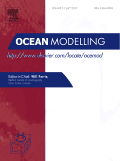
OCEAN MODELLING
Navigating the Depths of Ocean Science.OCEAN MODELLING, published by Elsevier Science Ltd, is a leading journal dedicated to advancing the understanding of ocean systems through innovative modeling techniques and interdisciplinary research. With an ISSN of 1463-5003 and E-ISSN 1463-5011, this journal is esteemed within the fields of Atmospheric Science, Computer Science (Miscellaneous), Geotechnical Engineering and Engineering Geology, and Oceanography, as reflected by its impressive quartile rankings in 2023, including Q1 in Oceanography and Q1 in Computer Science. Researchers and professionals benefit from the journal’s high-impact contributions, as indicated by Scopus rankings that place it among the top-tier publications in its categories. Although not an open-access journal, OCEAN MODELLING provides essential insights and methodologies crucial for both academic and practical applications, facilitating knowledge transfer and innovation among marine scientists, engineers, and policy-makers engaged in vital ecological studies and technological advancements regarding our oceans. Join the forefront of marine modeling research by contributing to and exploring the wealth of knowledge presented in OCEAN MODELLING.
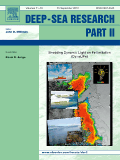
DEEP-SEA RESEARCH PART II-TOPICAL STUDIES IN OCEANOGRAPHY
Charting the Course for Oceanic ExcellenceDEEP-SEA RESEARCH PART II-TOPICAL STUDIES IN OCEANOGRAPHY is a leading journal in the field of oceanography, published by PERGAMON-ELSEVIER SCIENCE LTD. With an impressive ranking of Q1 in Oceanography and holding the 20th position out of 145 journals in the Earth and Planetary Sciences category, this journal provides a prominent platform for researchers and practitioners alike. Covering topical studies in oceanography since its inception in 1993, it continues to contribute significant insights into deep-sea research, enhancing our understanding of marine environments. Although the journal does not presently offer Open Access options, it remains a vital resource, appealing to students and professionals who seek to engage with innovative research and practical applications in the oceanographic community. The journal's ongoing commitment to excellence is evident as it plays a crucial role in advancing the field leading up to the present day and beyond.

Atmosphere
Innovating Research for a Sustainable FutureAtmosphere is a premier open-access journal dedicated to the field of atmospheric sciences, published by MDPI since 2010. With an E-ISSN of 2073-4433, the journal has established itself as a significant platform for the dissemination of research on atmospheric processes, climate change, and environmental dynamics. Based in Switzerland, the journal has garnered impressive recognition within the academic community, currently ranked in the 3rd quartile for Atmospheric Science and the 2nd quartile for Environmental Science (miscellaneous) as of 2023. Notably, it holds a commendable Scopus rank, emphasizing its impact with a 69th percentile standing in its category. Atmosphere aims to foster innovative research and comprehensive reviews that contribute to the understanding of air quality, climate policy, and environmental sustainability. Its open-access model not only supports the global sharing of knowledge but also enhances visibility and engagement among researchers, professionals, and students alike, making it an essential resource for anyone invested in the study of our planet's atmosphere.
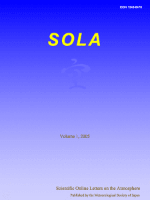
SOLA
Pioneering open access to innovative meteorological insights.SOLA is a distinguished journal published by the Meteorological Society of Japan, focusing on cutting-edge research in the field of atmospheric science. Since transitioning to an Open Access model in 2018, SOLA aims to facilitate the dissemination of knowledge and foster collaboration among researchers from around the globe. With a proud history spanning from 2005 to 2024, the journal has earned a reputation for high-quality publications, achieving a Q1 ranking in Atmospheric Science according to the 2023 category quartiles. Although its H-Index is currently not available, SOLA is recognized in Scopus rankings, standing at #82 out of 148 in Earth and Planetary Sciences, demonstrating its impact in the field. With its headquarters in Tokyo, Japan, and an unwavering commitment to advancing scientific understanding, SOLA serves as an essential resource for researchers, professionals, and students dedicated to exploring the complexities of atmospheric phenomena.